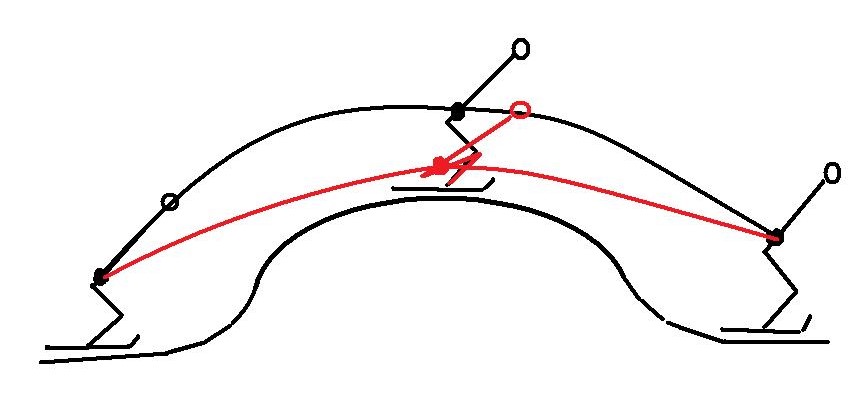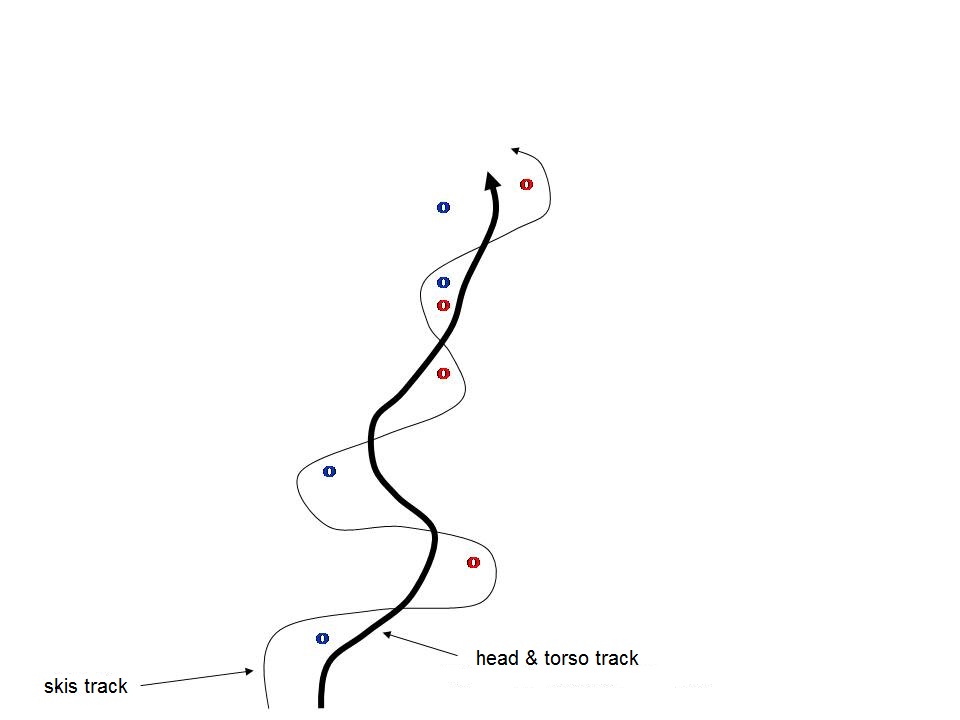among slalom and giant gates in a plane perpendicular to the slope
During the club discussion on skiing technique, I was reminded of a certain interpretation of the known principle of striving for the smoothest possible movement of the skier’s center of gravity. Its mechanism is known to everyone, it is discussed in the basic courses of assistant trainers and ski instructor courses, it is present in many skiing manuals. The point is that the path along the center of gravity between points A and B should be as short as possible, which means that the travel speed is the fastest.

The figure shows how the skier should overcome the bump. If it absorbs its elevation by bending the legs and hips, its speed is significantly higher than that of a skier maintaining constant deflection. The difference is due to both the shorter distance that the center of gravity must travel, and less pressure on the skis, and thus less braking, when passing through the bump by a way of lowering the center of gravity. You can check this difference when two skiers ride side by side on a not too steep ski-track or artificial bumps track that you often find on the slopes. I recommend it as a good lesson for young riders.

Figure 12. shows the already presented model of the skier’s center of gravity in relation to skis and slalom poles being passed. Please note that this move is presented in a “top view”. Let’s observe the movement of the slalomist’s center of gravity from Figure 12. in a different plane. Let’s look at him as we saw the skier’s center of gravity in Figure 11, i.e. in the vertical plane. Let’s develop the slalomist center of gravity ribbon from Fig. 12. in our mind and observe the movement of this center of gravity in the “up – down” plane. It’s like riding parallel to a skier and constantly watching him. Let’s review some movies on the web when the camera goes behind or next to the player. Let’s look then, as his center of gravity moves “up – down”, or how, and whether the torso goes up or down. It turns out that the center of mass of a very good skier, located somewhere in the middle of his torso, does not essentially change his distance from the snow, i.e. he does not make “up – down” movements. Referring to the principle described at the beginning, i.e. the greatest possible smoothness of movement of the skier’s center of gravity, it would be necessary to eliminate the old-fashioned “going up” throwing the skier as the bump throws him up in Fig. 11. What to do with the center of gravity after maximum bending in the hips and “pulling up” the legs in the second part of the turn (near the pole)? How do you start a new turn that once started going up? This, of course, quite a long time ago some trainers teach and show in trainings – there is no way up, but throwing the torso “down” towards a new turn. The skis are still going sideways, but the torso (head) is already starting a new turn. This new arrangement creates a situation in which the torso, following a short path, catches up and chases the skis, giving the opportunity to start dynamic edging in the first phase of turning. Combined with the classic theory of bending legs and hips when passing through a bump, this observation becomes a total criticism of “going up”. This criticism in studies is rather unpopular. I think the reason is that it is much harder to start a new turn, believing that the carved skis will definitely turn when placed on the edge. It is easier to “unload up” by simply moving them underneath. Avoiding “going up” is not only avoiding the unnecessary impulse generating additional braking pressure on the edges. With this look you can see that “going up” is also an element of extending the center of gravity path, and thus extending its travel time, from point A to B.